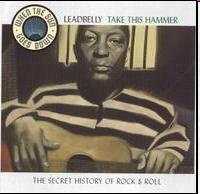
- Format: MP3

The fifth issue in Bluebird's Secret History of Rock & Roll project is the first by a single artist; the previous four have all been various-artists compilations. All feature excellent sound and decent if not exceptional packaging. This set, the complete RCA Victor recordings of Leadbelly, is up to that standard. All of the 26 tracks here were recorded in June of 1940 and released at various times as 78s by Bluebird. Some of the material includes virtually definitive versions of "Midnight Special," "Rock Island Line" (primarily because of the quality of the recording itself; the performance is awesome, but all of Leadbelly's performances of this song are), "Easy Rider," "Grey Goose," "TB Blues," "Don't You Love Your Daddy No More," the title track, "Stewball," and "I'm on My Last Go 'Round." This alone is reason enough for any fan of Leadbelly to purchase the CD, and these transfers are so fine, so warm, and so true sounding that they mark a new standard in remastering material from worn master tapes. (Give a listen to the back-to-back tracks "Good Morning Blues" and "Leaving Blues" — they sound as if Leadbelly is hanging on your couch singing these songs.) The music here doesn't sound like archival material; it sounds alive and it becomes possible to hear what those who were initially knocked out by Leadbelly were able to experience. For anyone interested in Leadbelly's music, this is as essential as the Folkways recordings — and in some ways, more s